
|
|
WhakairoCarving Māori carving or whakairo has developed over the centuries. The main mediums worked are wood, pounamu (nephrite jade) animal and human bone and onewa (basalt). Māori carving is unique in the world as each taonga (treasure) encompasses three main kaupapa (ideas) - record of history and events, identity and decoration. Although the Māori did not have a recorded history in the form of the alphabet and books, what many people fail to realise is that the carvings themselves are in actual fact recorded history. Every piece carved traditionally had a kaupapa and everyone could read them. The shape of the heads, position of the body as well as the surface patterns came together in each piece to record and remember events. Wood - and its uses in WhakairoEvery tree in the world falls into one of two wood type categories - hardwood or softwood.
|
| Akeake - the hardest of all natives and a bush man's nightmare to his chain saw. | |
| Maire - the second hardest wood and the favourite kai (food) of the huhu (a native grub). | |
| Manuka and kanuka - mainly used for palisading. | |
| Rata | |
| Rimu | |
| Puriri | |
| Matai | |
| and many more. |

Softwood is the opposite of hardwood, fast growing, with growth rings wide apart and light. This type of wood was mainly used for waka taua (war canoes); large, decorative carvings like poupou (wall carvings); as well as the carvings on the front of whare hui (meeting houses). The following is a short list of native soft woods:
| Kauri - The hugest native tree of all the forests. (Grows over 200 ft) It is also the oldest, maturing at about 2000+ years. Swamp kauri is still found and carved today. From being buried amongst the minerals in the ground, when it is carved, it has a natural sheen of its own - provided by Papatuanuku. Kauri is also a soft white pine. | |
| Totara - Is a soft red pine. Growing to 150ft with 800 years until full maturity. Totara burl is the rarest wood. It is produced by bad growth years and only the totara produces it. | |
| Kahikatea - The tallest (250ft) and the most emergent tree. This is also the softest of all the native woods. | |
| Tawa | |
| Miro | |
| Pokutukawa | |
| Karaka | |
| and many more. |
 Tips for Carving
Native Wood
Tips for Carving
Native WoodThe following list comprises a few tips to carving native New Zealand wood.
| Always work with the grain and have patience - for the grain goes where it wants to go, not where you think it should. | |
| Always work with sharp tools - if you can shave the hair off your arm without any pressure on your skin, the chisels are then considered sharp enough. | |
| One chisel should last at least seven lifetimes - don't grind them unnecessarily- 10 seconds on a grinder takes off one year of life. | |
| Have patience and care as you do each stage - don't move onto another stage until you have completed the previous one. |

Pounamu is found only in the South Island of Aotearoa (New Zealand). This is why, the South Island is sometimes called Te Wai Pounamu, the greenstone water. This variety is native to here, and cannot be found anywhere else in the world.
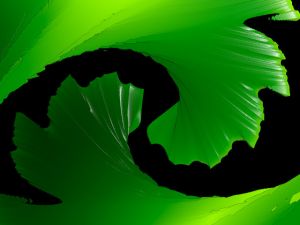 The characteristic of pounamu, that stands it apart from other types of jade
are as follows:
The characteristic of pounamu, that stands it apart from other types of jade
are as follows:
| Polished pounamu can turn to a glass feel and look. | |
| Pounamu also holds different wairua (spirit). |
The most prized bone is whale bone. Carvers in Aotearoa (New Zealand) need to hold a certificate issued by DOC (Dept of Conservation) before they are allowed to collect, buy or sell any whale bone artefacts, pounamu, native birds and/or feathers.

The most common bone that is around and carved today is beef bone. Sometimes deer antler, goats teeth or bull horns are used instead. Beef bone, when polished is a clean white. As whale bone has a marble look about it or an off yellowish white colour, other artists try to imitate this by staining the beef bone with tea, shoe polish and dyes. If you ever buy a beef bone that does not have a clean white colour - it has been stained - don't get fooled!!!
Cleaning the bone
| |||||||||||
Design your carving
| |||||||||||
Cutting and shaping
| |||||||||||
| To finish, you need to polish the bone, or better, buff your carving. Buffing will give a really good finish. |
When carving bone, you must always ensure that there is adequate ventilation and always wear a mask when grinding or shaping.
 Stone
StoneMāori people used to, and some still do today, carve stone, apart from pounamu which has already been discussed. Stone, like wood, comes in hard and soft as well as medium. Soft stone are mainly volcanic or igneous, for example pumice stone.
Medium stones are mainly sedimentary types, for example Hinuera (a type of sandstone and one of the early stages of pounamu).
Hard stones, also known as complimentary stones, are onewa (basalt), grey wacke argelite and obsidian.
Here's a few nice pictures of whakairo.
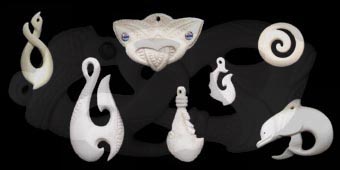
|
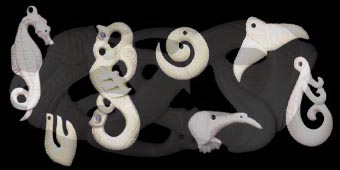
|
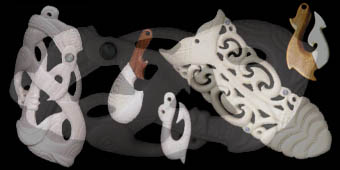
|

|
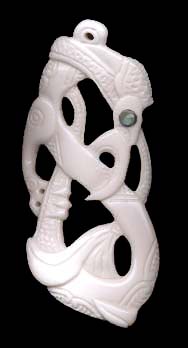 Tangaroa
TangaroaOpposite is shown a bone carving entitled "Tangaroa". Here's a little of it's meaning.
For lovers of the ocean and the sea, Tangaroa is the Māori Guardian of the ocean, traditionally known for his power and protection over the oceans and the seas.
Tangaroa is one of the children of Ranginui (the Sky Father) and Papatuanuku (the Earth Mother).
The fin reminds you to be well balanced in life and to stay on course.
|
Need help with a Māori word?
This page last updated 06/07/2003 02:11:44 AM
All materials on this site © J.M.Wilson 2001-3, unless otherwise stated. Any comments? Send me an e-mail. |